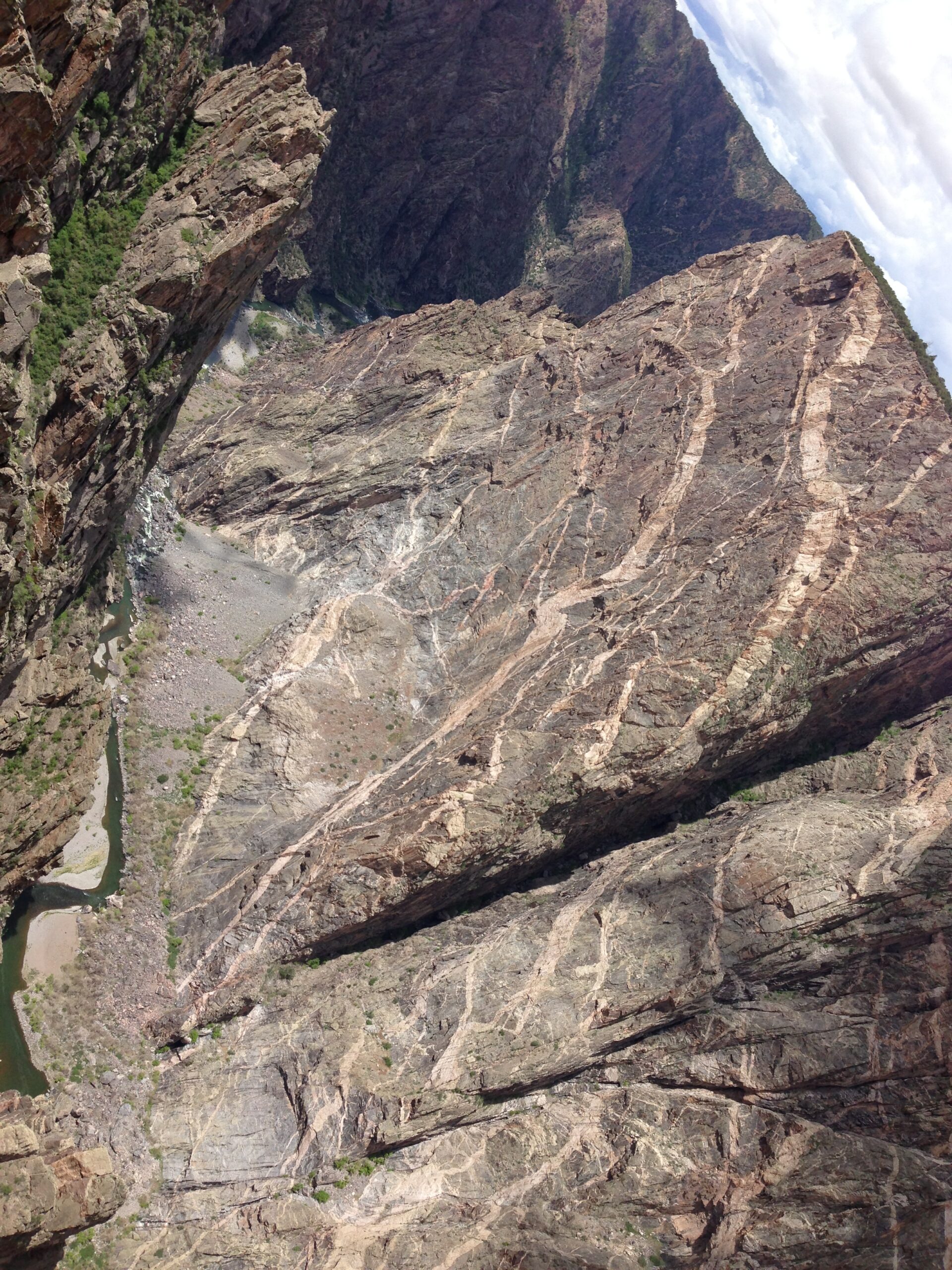Commissioned for the Western State Colorado University Wind Symphony
directed by Michael Flynn
and Solo Marimba, Greg Haynes
Premiere January 28, 2016 at the Colorado Music Educators Conference in Colorado Springs
Program Note
Water is life: a simple concept; but in the arid west, settlers could not rely on rain to supply water to nourish their fields. The community at East Portal brought together people of various skills and backgrounds to construct a tunnel that would transfer a portion of the Gunnison River water to the fields of the Uncompahgre Valley to the west. Their labors from 1905 to 1909 drove a tunnel 11 feet x 12 feet six miles through the cliffs of the Black Canyon and helped ensure the survival of communities in the valley. Abraham Lincoln Fellows, revealed feelings of awe and respect for a place that tested his mettle and challenged his courage. He had been studying the canyon for months, and had been a hydrographer (water engineer) for years. He hired Will Torrence, of the 1900 expedition, and they were standing a short distance above the Narrows, where the canyon walls squeeze to 40 feet, and the exact spot where that earlier trip had been abandoned.
Fellows said the following: “When about noon, we reached the mighty jaws past which there was to be no escape, a feeling of nervousness and dread came over me for the first time. Right then I made the only discouraging speech that was made during the entire trip, and I said to Torrence. ‘Will, your last chance to go out is to the right. You can make it there if you wish, but if we cross the river at this point there can be no return; we must go on.'”
Unlike the trip in 1900, this trip was conducted in mid-August to take advantage of summer heat, while the river level might still be very low. In addition, they packed lightly. Giving up the idea of boats, they acquired an inflatable rubber air mattress for floating and rubber bags to hold cameras instruments, rope and other equipment. Both men made many accounts of this dangerous and majestic place.
“One remarkable point which we passed I called the Giant Stairway. The walls looked almost as if cut into enormous steps by some Titan of old, while statues, turrets and pinnacles adorned the rugged precipices on either side. Leaning out a little from one of the giant steps was a long, thin rock like needle, entirely detached from the cliff. It seemed extraordinary that it could so hold its position for centuries, as it had apparently done.” – Abraham Lincoln Fellows
“For ages masses of black rock had been falling from above, and in this narrow part had got wedged between the walls of the canyon, forming a tunnel through which the river rushed in a winding course at terrific speed. Mass after mass had fallen until above the tunnel rose a great volume of rock. The most likely thing was that [we] would be sucked down into the maelstrom, or dashed to pieces against the rocky walls.” – William W. Torrence
Here “there were deep pools… where we were obliged to swim, into which the water boiled from the caves above and sucked out again through the crevices between the boulders below. In one of these pools I was drawn completely under water in an eddy. I fully expected to be drawn down into the crevices of the rocks below, but by dint of the hardest kind of swimming, succeeded in getting into still water. At this time Torrence felt that he would never see me again.” – Abraham Lincoln Fellows
This last quote is the biggest inspiration to the piece and especially the title. The men were at a moment of truth. Blindly push forward, not knowing if either would make it out the other side, or attempt to turn back and make the dangerous journey all over again. Fellows, taking a leap of faith, push on, disappearing into the water. Torrence, after waiting some time, then took the same leap of faith not know the fate of his friend who went before him.
The piece is dedicated to my late father in law, Tom Shipley, who passed in July and loved the US national parks.



